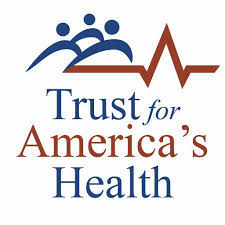New Report Finds Nation's Public Health Emergencies Are Increasing While State Emergency Preparedness Levels face Challenges

Report provides action steps for states to improve emergency preparedness; progress will require action by public health agencies, elected officials and state residents
Washington, DC) - February 12, 2019 - Seventeen states place in the top tier of a three-tiered measure of performance on 10 indicators of public health and emergency readiness, according to a new report Ready or Not: Protecting the Public's Health from Diseases, Disasters and Bioterrorism, released today by the Trust for America's Health (TFAH). Twenty states and the District of Columbia score in the middle tier and 13 states score in the lower tier.
State public health and emergency preparedness, by scoring tier:

The report takes an annual snapshot of states' public health and emergency readiness. Authored by TFAH since 2003, it documents that all states have made progress in preparedness since 9/11, but, also highlights pressing needs for additional action particularly as weather- related and other public health emergencies become more frequent.
The report, although not a comprehensive evaluation of any state's overall emergency readiness or response, focuses on key indicators of states' level of emergency preparedness. It identifies specific action-steps that if taken would improve the jurisdiction's overall level of emergency preparedness, including dedicated funding for health security initiatives, modernizing and supporting technologies and innovations within public health programs, and building multisectoral collaboration and leadership.
The report's 10 key indicators of state public health preparedness are:

Key report findings include:
- A majority of states (31) have made preparations to expand public health and healthcare capabilities in an emergency, often through inter-state collaboration and compacts.
- A strong majority of Americans (96%) who access water from a community water system, have access to water that meets all applicable health-based standards. Ninety percent of all Americans get their water from a community water system.
- Most states are accredited in the areas of public health and emergency management, many in both. These accreditations are one measure of a state's capacity to effectively respond to health threats.
However, areas of concern include:
- Seasonal flu vaccination rates, already below 50 percent, fell last year. The flu vaccination rate for Americans ages 6 months and older dropped from 47 percent in the 2016 - 2017 season to 42 percent during the 2017- 2018 season.
- In 2018, 45 percent of employed state residents did not have access to paid time-off, meaning they were more likely to go to work if ill, increasing the potential for infections to spread.
- Only 28 percent of U.S. hospitals, on average, earned top-quality patient safety grades. Hospital safety scores measure performance on such issues as infection control, intensive-care capacity, nursing staff volume and an overall culture of error prevention.
"Preparedness is key to preventing harm when public health emergencies and natural disasters occur, but, being prepared requires dedicated funding and multi-sector planning and collaboration," said John Auerbach, President and CEO of the Trust for America's Health. "The risks to America's health security are very real, and in the headlines - from wildfires to floods to food borne illnesses. These events are wake-up calls. To stay safe, we need to devote more time and money to emergency preparedness."
TFAH's report also includes a number of recommendations across 11 high priority areas. Among the top priorities:
- Congress should fund public health and health system preparedness and response as well as global health security.
- Congress should pass the Pandemic and All-Hazards Preparedness and Advancing Innovation Act.
- Investment in disease surveillance and data infrastructure needs to be significantly increased.
- The "last mile" of medical countermeasure distribution, meaning ensuring that important medications or other needed supplies get to the right person at the right time, needs to be strengthen.
Trust for America's Health is a nonprofit, nonpartisan organization that promotes optimal health for every person and community and makes the prevention of illness and injury a national priority. WWW.tfah.org
CONTACT:
Rebekah Pepper, 202 544-4705, [email protected]
Rhea Farberman, 202 864-5941, [email protected]
- Tags:
- data infrastructure
- Disaster Preparedness
- disease surveillance
- emergency management
- emergency preparedness
- emergency readiness
- food borne illnesses
- global health security
- health security initiatives
- health system preparedness
- health threats
- Hospital Safety
- infection control
- intensive-care capacity
- John Auerbach
- medical countermeasure distribution
- natural disasters
- nursing staff volume
- Pandemic and All-Hazards Preparedness and Advancing Innovation Act (PAHPA)
- patient safety
- public health
- public health agencies
- public health emergencies
- public health programs
- state public health
- TFAH
- Trust for America's Health (TFAH)
- Login to post comments